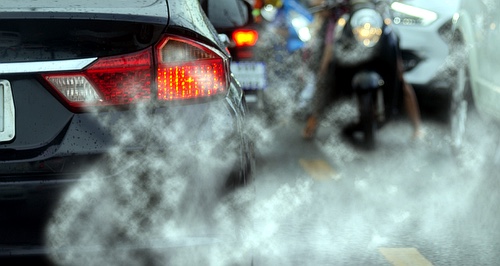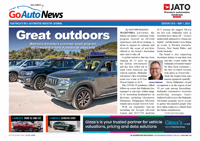Make / Model Search
News - General News - EmissionsNew-vehicle emissions dropping slowly: NTCRoad to oblivion: Electric utes and large SUVs – or dramatic changes in buyer preferences – are needed for a big cut in Australia’s transport emissions. Trend to big SUVs, utes and lack of clean alternatives keeping Aus car emissions high19 Sep 2022 THE National Transport Commission's latest emissions intensity report shows that CO2 output for new light vehicles sold in Australia dropped 2.0 per cent between 2020 and 2021 but that increased sales of SUVs and utes are slowing the clean-up of a sector that is responsible for a large chunk of Australia's carbon footprint.
According to the NTC report, if all light vehicles sold in 2021 were ‘best in class’ for emissions, the result would have reduced by 91 per cent for passenger vehicles and small SUVs, and 47 per cent for larger SUVs and utes.
Transport accounts for 18 per cent of all of Australia’s carbon dioxide emissions. Average emissions intensity for passenger cars and light SUVs was 146.5 g/km in 2021 212.5 g/km for larger SUVs and light commercial vehicles.
Data in the report reflects the carbon impact of tailpipe emissions but excludes any impact of the electricity used to power electric vehicles or lifecycle emissions for a vehicle related to manufacture, transport to point of sale and disposal at end of life.
Vehicles that perform best in terms of emissions intensity typically use battery or plug-in hybrid technology.
The report pointed to trends observed in other countries that can lead to significant uptake in greener vehicles including investment in public recharging stations, preferential tax arrangements and other incentives, as well as the adoption of emissions standards.
From this, the key takeaway from the 2021 NTC report is: “While there are more electric and hybrid vehicles on Australian roads than ever before, there’s still significant potential for growth.”
The report says sales of electrified vehicles are unequivocally on the rise in Australia, with sales of battery electric vehicles (BEV) and plug-in hybrid electric vehicles (PHEV) increased by 179 per cent from 2020 to 2021. Both come from low bases.
According to statistics compiled by NTC, BEV sales nearly tripled and PHEV sales doubled but hard data shows they represent just 0.23 per cent of the nation’s 18.4 million cars and light commercial vehicles on Australia’s roads.
The report suggests range anxiety is reducing with significant improvement in battery range from around 200km in 2011 to a maximum of around 600km in 2021.
Increases in EV range mean more distance travelled in between charges.
But “We’re falling behind the rest of the world,” says the NTC report.
“Australia is falling behind other countries when it comes to driving down emissions.”
Of all new passenger cars sold here last year around 45 per cent had an emissions intensity of 160 g/km or less, compared with 90 per cent for cars sold in Europe.
According to a report by the International Energy Agency published this year, 2.8 per cent of 2021 car sales in Australia were electric. This figure was 17 per cent in Europe, 16 per cent in China, 5 per cent in the United States and 4.4 per cent in New Zealand.
Australians are continuing to buy larger, less efficient vehicles. Sales of 4x4 and 4x2 utes increased by more than 43,000 units, and large SUV sales increased by around 25,000.
Half of all new car sales were SUVs, up from a quarter of all sales a decade ago when the small vehicle segment once accounted for a quarter of all sales but today is one in 10.
“Reducing carbon emissions intensity across every new vehicle sold would help lower total emissions from Australia’s transport sector. This would help cut Australia’s overall carbon emissions,” says the NTC report.
The emissions intensity for many of the popular larger vehicles exceeds 210 g/km.
“There is no option yet in Australia to purchase an electric ute,” says the report.
NTC compiled its emissions intensity report from information supplied by Federal Chamber of Automated Industries and international comparisons.
It is an important tool used to inform various levels of government across Australia on potential legislation relating to motor vehicles and their impact on the environment.
Vehicle emissions intensity is calculated for light vehicles including hatchbacks, sedans, wagons, people movers, 4WDs, SUVs, sportscars and light commercial vehicles, for example utes or vans sold in Australia in the 2021 calendar year.
Models with drivetrains from fully battery powered through to petrol and diesel are included.  Read more9th of September 2022  Japanese carmakers’ future plans snub EVsICE powertrains including hybrids feature heavily in Subaru, Mazda and Mitsubishi’s future product announcements2nd of September 2022  Ambitious 2024 zero-emission truck targetSEA Electric is calling for zero-emission new truck sales target of 7% by 202423rd of August 2022  Feds announce emissions action at EV summitBroad welcome for federal push to set agenda on fuel efficiency, electrification |
Click to shareGeneral News articlesResearch General News Motor industry news |











Facebook Twitter Instagram